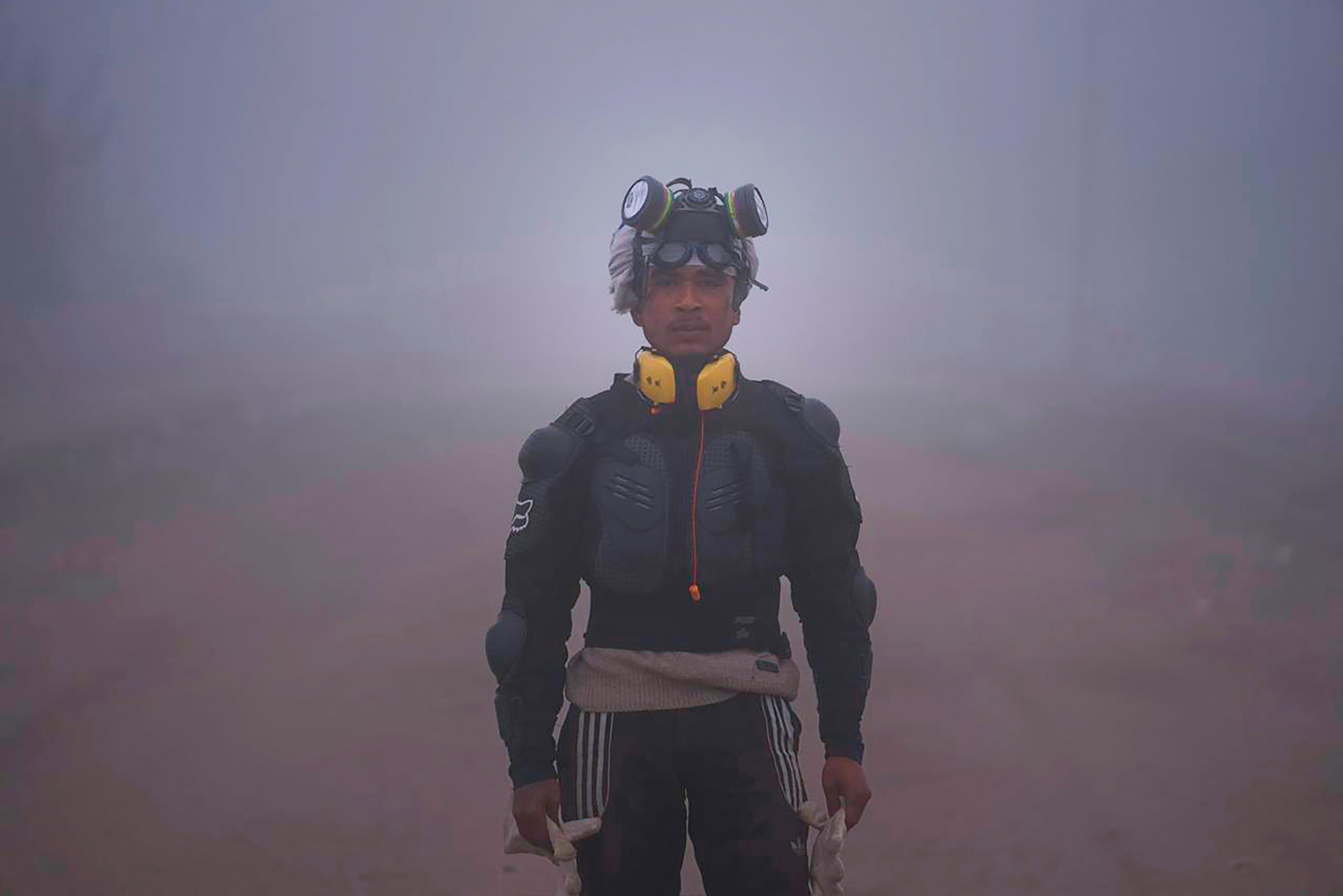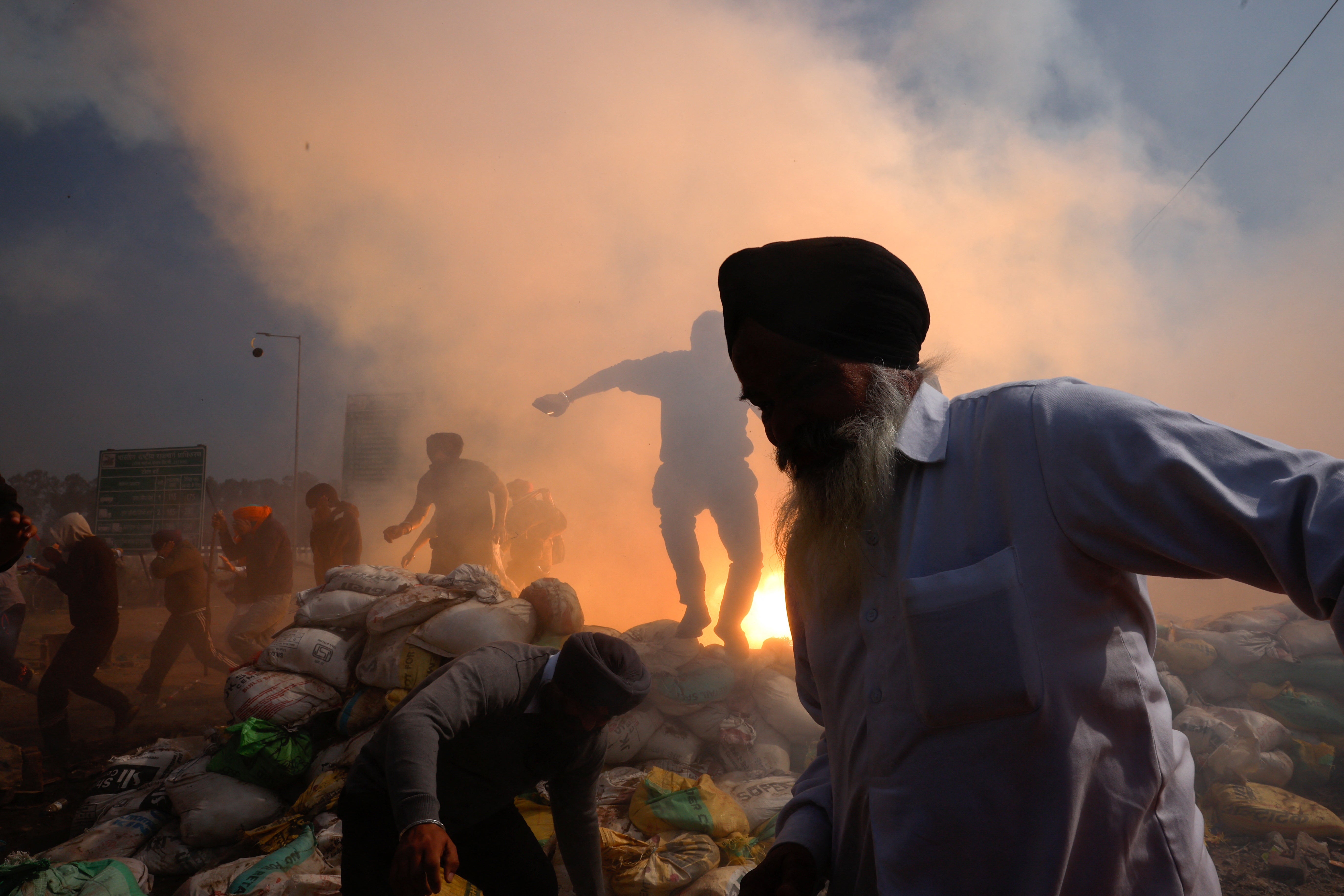One dead amid police violence as Indian farmers resume march on Delhi
Protesting farmers demand legislation guaranteeing minimum prices for 23 crops
Your support helps us to tell the story
From reproductive rights to climate change to Big Tech, The Independent is on the ground when the story is developing. Whether it's investigating the financials of Elon Musk's pro-Trump PAC or producing our latest documentary, 'The A Word', which shines a light on the American women fighting for reproductive rights, we know how important it is to parse out the facts from the messaging.
At such a critical moment in US history, we need reporters on the ground. Your donation allows us to keep sending journalists to speak to both sides of the story.
The Independent is trusted by Americans across the entire political spectrum. And unlike many other quality news outlets, we choose not to lock Americans out of our reporting and analysis with paywalls. We believe quality journalism should be available to everyone, paid for by those who can afford it.
Your support makes all the difference.A 24-year-old man reportedly succumbed to his injuries in a state bordering the Indian capital on Wednesday as police fired tear gas on protesting farmers as they resumed their march to Delhi after talks with the government failed.
Shubh Karan Singh, the young farmer, was taken to the hospital where he died of a head injury received at the Khanauri border, according to the Hindustan Times.
“He was already dead when he was brought to hospital at around 3 pm. He suffered bullet injuries in his head,” Harnam Singh, medical superintendent at the Government Medical College and Rajendra Hospital in Patiala, told The Quint.
However, the Haryana police on their X/Twitter handle refuted the news of the death and said: “According to the information received so far, no farmer has died today. This is just a rumour. There is information about two policemen and one protestor being injured at Data Singh-Khanori border who is undergoing treatment.”
Fleeing the stinging gas and clouds of smoke, the farmers, some wearing medical masks, ran into the fields surrounding their gathering point on a highway about 200km north of New Delhi.
Authorities have fortified the capital, barricading the highways into New Delhi with cement blocks, metal containers, barbed wire and iron spikes to prevent the farmers from entering. The protesters are, however, arriving with bulldozers and excavators to try and push through.
Jagjit Singh Dallewal, one of the farmers leading the march, said they did not want any violence, but condemned the government over the massive security measures.
“It is our request that we want to go to Delhi in a peaceful manner. The government should remove the barricades,” he said.
Sukhpal Singh Khaira, chair of the All India Kissan Congress, condoled the death of the protester and said: “My heartfelt condolences to the family of deceased farmer Shubkaran son of Charanjit Singh of V. Ballo District Bathinda who was shot by Haryana police today at Khannauri border during #FarmerProtest2024. This is matter of grave concern and at the same time shame for @BhagwantMann for being a mute spectator to blatant intrusion by Haryana police into Punjab territory injuring over 200 farmers and killing this youth-Khaira @INCIndia @INCPunjab.”
The visuals from Shambhu border near Punjab and Haryana showed police lining up in riot gear as the farmers, gathered amid morning fog, waved colourful flags emblazoned with the symbols of their unions, with loudspeakers urging them to fight for their rights.

Television images showed some farmers wearing gas masks and other safety gear to protect themselves from the police assault.
The protests come at a crucial time for India, where national elections are due in the coming months and prime minister Narendra Modi’s Bharatiya Janata Party is widely expected to secure a third successive term in office.
Authorities are set on putting a lid on it as they fear it will renew a movement from over two years ago when tens of thousands of farmers camped out on the outskirts of the city for over a year. In a bid to contain the outrage, agriculture minister Arjun Munda urged the farmers to resolve their grievances through the talks.

"After the fourth round, the government is ready to discuss all the issues" such as guaranteed prices for the farmers’ crops, he posted on social network X, as the march resumed. "I again invite the farmer leaders for discussion. It is important for us to maintain peace."
The offer comes after farmers on Monday rejected the government’s previous proposal for five-year contracts and guaranteed support prices for produce such as corn, cotton and pulses. The protest organisers say the farmers are seeking a new legislation that would guarantee minimum prices for 23 crops.
The government protects agricultural producers against sharp falls in farm prices by setting a minimum purchase price for certain essential crops, a system that was introduced in the 1960s to help shore up food reserves and prevent shortages.

The system can apply up to 23 crops, but the government usually offers the minimum price only for rice and wheat.
The farmers say guaranteed minimum support price for all 23 crops would stabilise their income.
They are also pressing the government to follow through on promises to waive loans and withdraw legal cases brought against them during the earlier 2021 protests.
About 10,000 people had gathered on Wednesday, along with 1,200 tractors and wagons at Shambhu on the state border, police in Haryana posted on X, warning against the risk of stone-throwing as they were armed with sticks and stones.
Security was also stepped up at entry points to New Delhi, with police in riot gear manning barricades topped with barbed wire in some places, slowing traffic entering the city of more than 20 million and causing snarls.
Late on Tuesday, the Haryana police’s chief ordered the immediate seizure of the heavy equipment brought by the farmers, to keep protesters from using it to destroy barricades.
Police also asked owners of such equipment not to lend or rent it to protesters, as its use to harm security forces would be a criminal offence.
Additional reporting by agencies

Join our commenting forum
Join thought-provoking conversations, follow other Independent readers and see their replies
Comments